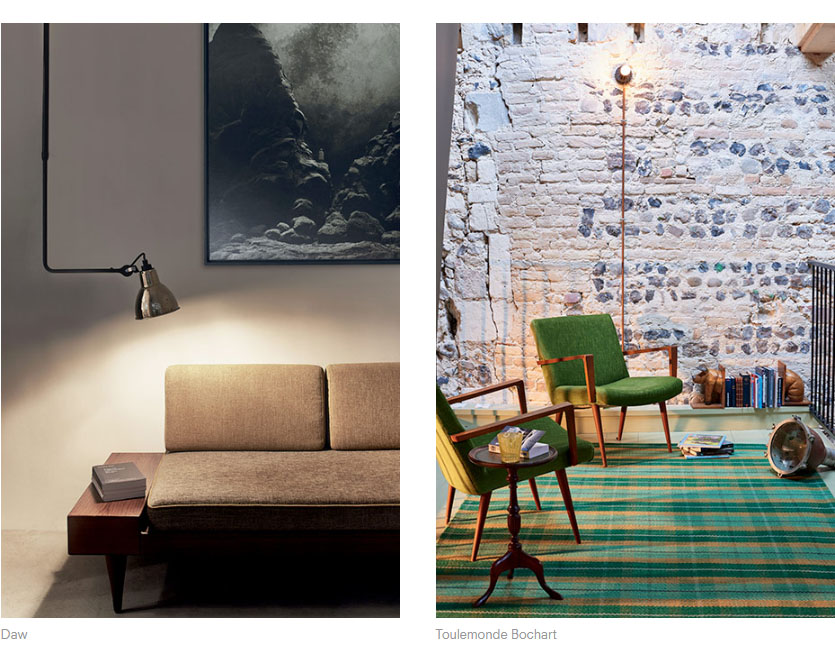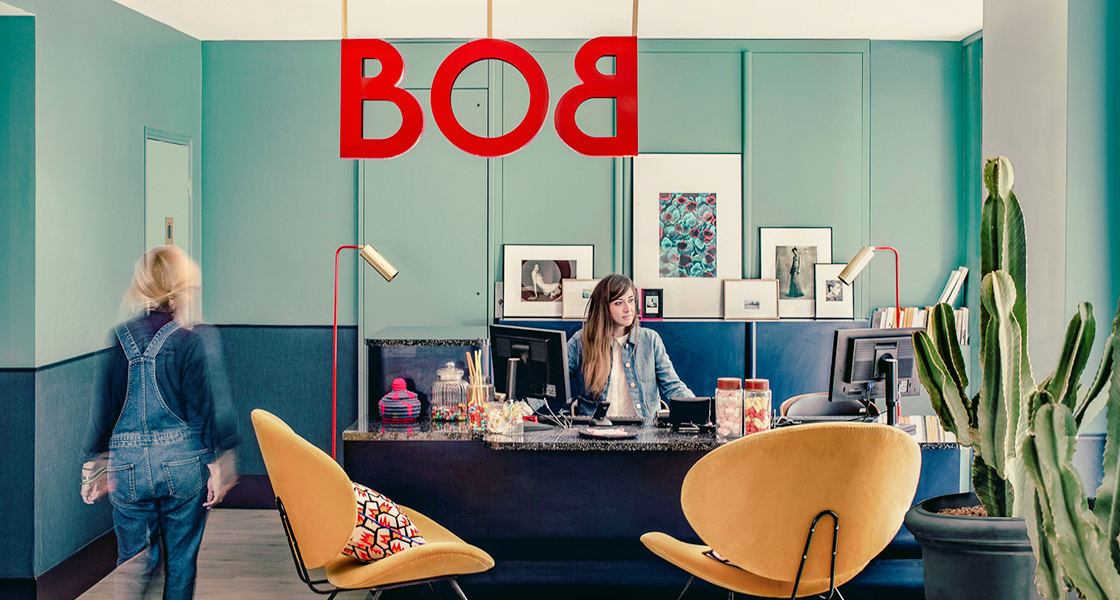Hybridization, the modern-day space odyssey
Published on 25 June 2019

They may only be virtual, but digital tools are having a very real impact on our working, leisure and living environments. Here’s a quick guide to help you find your way around these now multifunctional spaces.
Work, eat, sleep, repeat. Once upon a time, the majority of urban lives followed clear-cut patterns, with work and home lives unmistakably separated by the physical presence of office walls. Those were the days that today’s millennials have never known, having been born into a world where everyone moves around freely on electric scooters between spaces whose codes are increasingly blurred, intertwined: hybrid.
Squishy sofas, rattan chairs, a profusion of pot plants, soft hues and creative wallpapers, hammocks and garden chairs… It may not look like it, but this is actually an office. The decor may exude a somewhat different vibe, but the name leaves no doubt whatsoever. Morning Coworking is one of the Parisian leaders in connected co-working spaces. The space combines a broadband connection with exceedingly homely decor to promote the well-being of all its users. Cosy. At Porte de Clichy, the firm’s latest acquisition even offers a 450m2 space named “l’appart” (“the apartment”), dedicated to events.
Chic loft or hotel lobby? Kwerk, yet another of the big names in co-working, sets itself apart by offering comfortable elegance, a slightly more arty feel, noble materials, muted colours and a specific concept: “wellworking”. This is delivered not only through the fitness facilities with which each space is equipped, but also through the very carefully considered decor. And hybridization doesn’t just affect the way in which the space is used – it affects the furnishings, too.

Decorative pieces with a Pols Potten vibe, industrial lighting such as DCW’s Gras lamps, Hartô-style shelving and seating crafted from light-hued wood, a multitude of sofas à la Normann Copenhagen, arty or colourful Toulemonde Bochart-inspired rugs… all these pieces have already become part of the decorative vocabulary adopted by these now hybrid spaces. USM’s colourful and timeless pieces, which already flirted with both the office and home environments, now sit alongside hybrid products from other market players better known for their office furniture. We’re seeing modular seating such as the Pixel cubes from Bene, designed specifically with co-working spaces in mind, or the reassuringly curvaceous creations from Kinnarps.
Nods to the home environment are present in varying degrees in today’s co-working spaces, but are nonetheless essential, softening these ultra-connected spaces and clearly expressing the desire to work differently.
But is co-working simply a passing trend? Over the past four years, the percentage of employees using spaces of this kind has risen from 15 to 38%, with the figures higher still amongst managers (51%) and millennials (61%)*. And the demand for co-working spaces looks set to rise still further, with the development of teleworking, short-term missions and contracts and the arrival of ‘Slashers’. Faced with strong competition, firms have no choice but to find ways of standing out from the crowd, with decor playing a key role.
The beautifully designed space created by the highly talented Daphné Desjeux and Dorothée Delaye still has a reception desk and is unquestionably a hotel. The upbeat name, however, ‘Bob’, is an acronym for “Business on board”. In the lobby area, the reading room and on the patio, the desks are all extremely informal. You have to make your way down to the basement and the modular meeting room to find the codes and furnishings that are more reminiscent of a traditional office space…which workers can abandon for a treatment in the spa. A spa treatment is, in fact, included in the price for “free worker” guests – and is undoubtedly an amazing way of boosting both concentration and creativity!
The establishment, which is based in the 14th arrondissement of Paris, isn’t the only one to welcome locals, freelancers and co-workers: The Hoxton, Citizen M and Okko are three other hotels that also offer the spaces and connectivity modern-day workers crave. “In coming years, hotels will mutate into increasingly efficient workspaces”, predicts Olivier Saguez, CEO of design agency Saguez&Partners.
Calm and studious surroundings, comfort, services: nomadic workers are already starting to get a taste for the merits of this type of venue, and the hotels themselves have absolutely nothing to lose. By adopting their otherwise under-used communal areas, hard-working locals are helping them turn their precious space into profit.

But why don’t we all just work… in an office? The atmosphere there’s changing, too, with ping-pong tables and table football sometimes even now making an appearance. Informal spaces where people can chat and interact are currently all the rage, fostering creativity and boosting team spirit. Firms that want to retain talent and exude a friendly image now have no choice but to up the ante with their decor. 73% of managers say that the way in which the workspace is decorated “plays a huge part in hiring and retaining staff**”. Materials, shapes and colours more commonly seen in residential settings do a particularly good job of impressing employees, hence their extensive adoption by office design specialists. Paris Design Week has even chosen hybridization as its central theme for the September 2019 edition. And it was certainly no coincidence: this is clearly just the start.
By Marie Montuir
*Actineo 2019 Survey on quality of life in the workplace.
**Les Echos – Le Parisien Médias survey 2019.